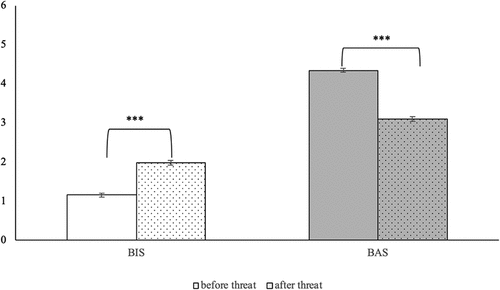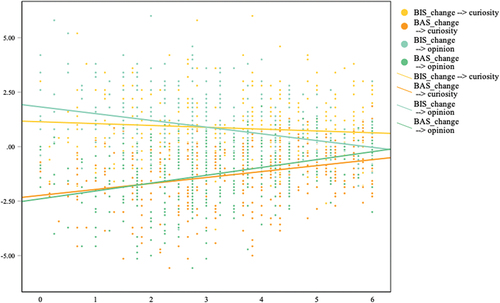Figures & data
Table 1. Descriptive statistics and correlations for study variables.
Figure 1. The change of threat-related affective states from before to after mentioning AI coaching.

Figure 2. The effect of threat-related affective states change on curiosity and opinion.

